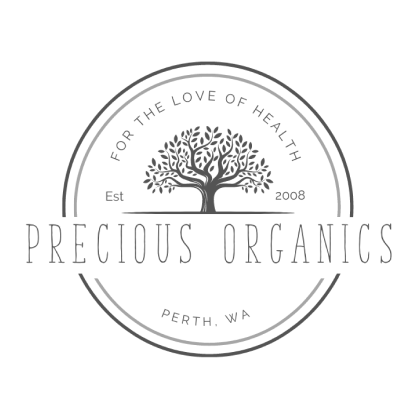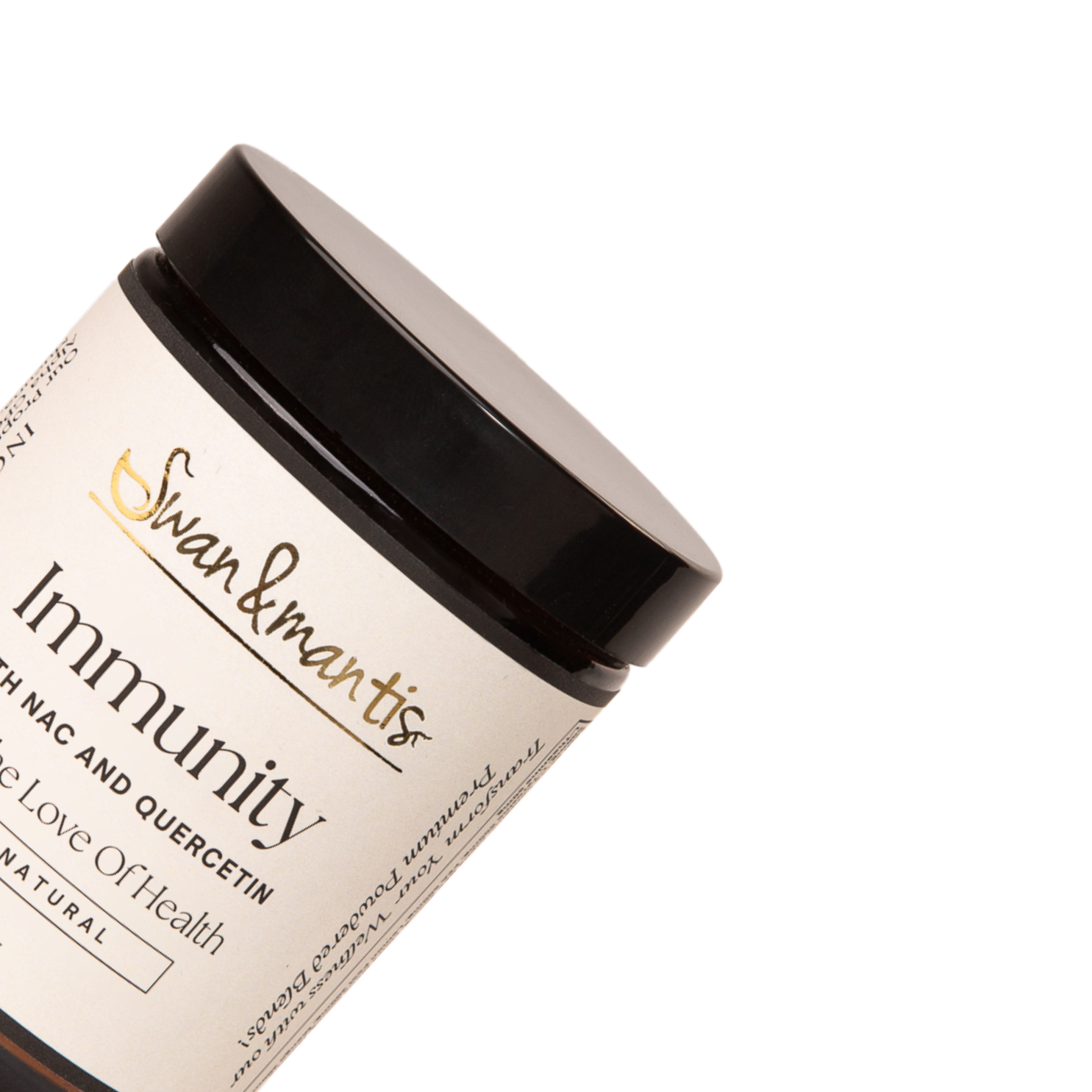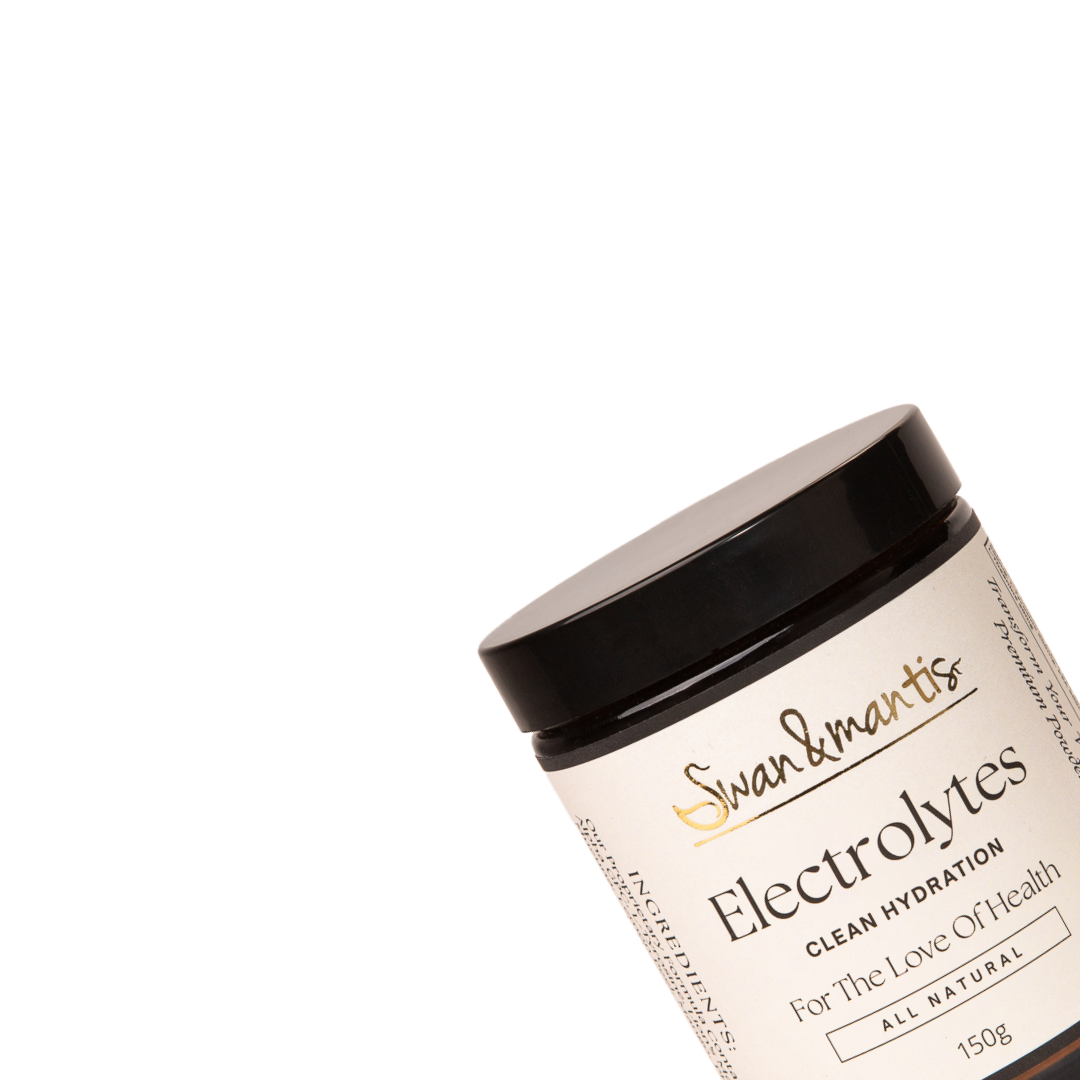AFA Blue-Green Algae
Primordial Food from Klamath Lake, Oregon.
Benefits
Aphanizomenon flos-aqua (AFA) blue-green algae are made primarily of soft proteins and polysaccharides that are easily digested by our intestinal bacteria that in turn then food our blood and cells. This “softness” makes AFA one of the most digestible and utilizable protein foods in all of nature. This “soft” characteristic is unusual for plant cells, but is common for animal cells; this is a reason why blue-green algae are often considered 25 percent animal.
AFA is loaded with chlorophyll. Chlorophyll helps build our blood due to the presence of the pyrol ring in chlorophyll, which is identical o the pyrol ring found in hemoglobin. Chlorophyll helps fight leukemia as well as certain forms of skin and liver cancer. Additionally, chlorophyll helps to deodorize the bowels
AFA contains an extraordinarily concentration of the blue-pigment phycocyanin which helps preload the immune system by stimulating the production of more stem cells from the bone marrow. Stem cells are the basic form of all cells and can be transformed into any cell (including T-cells, NK cells, macrophages and other immune system cell artillery).
AFA is known to contain an exceptional forty major and trace minerals, picked up from the constant stirring of nearly thirty feet of mineral sediment at the bottom of Klamath Lake. Minerals are the atomic matrix of our bodies and are necessary to build every tissue including our bones, teeth, skin, hair, nails, internal organs, muscular system, immune system and nervous system.
Generally, the more domesticated our food is, the more mineral deficient it becomes. Weston Price’s work in Nutrition and Physical Degeneration demonstrated that the more one adopts a “civilized” diet, the more quickly mineral deficiency symptoms appear. Mineral deficiencies have been associated with every degenerative and chronic condition known to humankind. The key solution to mineral deficiencies appears to be including wild foods in our diet. AFA is a wild food.
AFA is an excellent source of B vitamins including appreciable amounts of vitamins B1, B2, B3, B5, B6, B9 and B12. In general, B vitamins fight stress by helping to more efficiently convert polysaccharides and other carbohydrates into glucose for immediately available energy, endurance and stamina.
The vitamin B12 found in AFA may or may not be usable by the human body. Dr. Gabriel Cousens’ clinical research indicates that the vitamin B12 in AFA does not increase serum B12 levels in human blood, indicating that the B12 in AFA is unavailable. AFA is also an important source of vitamin C. AFA contains omega-3 fatty acids, including the long-chain omega-3 fatty acid known as docosahexonoic acid (DHA). AFA also contains the phospholipid choline. This makes AFA a brain and nervous system supporting food.
PROTEIN & AFA algae is a complete protein source containing approximately 60 percent protein. Eighteen amino acids (protein building blocks) are present in AFA algae. The protein and amino acids in AFA is in highly assimilable glycoprotein and amino acid peptide forms instead of the lipoprotein form found in animal products such as beef and chicken (which are usually cooked into even more difficult-to-digest forms of protein). Therefore, it takes less energy to digest and utilize algae protein. Additionally, neurotransmitters for brain health can be produced from AFA protein more easily and swiftly due to its ease of digestibility.
Protein is used to construct, maintain and repair every tissue in our bodies from our bones, teeth, muscles, nerves, glands, heart, blood, liver, skin, hair and everything in between. A lack of protein is mostly associated with muscular weakness slow healing and brain chemistry imbalances. An excess of animal protein is associated with heart disease, kidney disease, cancer and colon cancer. It is becoming more and more clear that plant-based, complete protein sources are of critical importance for the future – this is exactly what superfoods provide and this is exactly what AFA algae provides.
Some of the free amino acid peptides found in AFA may be responsible for helping to detoxify our bodies of heavy metals. Dr. Gillian McKeith reports in her booklet Miracle Superfood: Wild Blue-Green Algae that in her clinical experience AFA algae has been effective in chelating (removing) dangerous, toxic heavy metals such as cadmium, lead and mercury. She recommends consuming 0.21 to 0.35 ounces to AFA blue-green algae daily for severe cases of heavy-metal toxicity.
PHYCOCYANIN
The antioxidant phycocyanin is a pigment that provides the intense blue colour in blue-green algae. Phycocyanin can constitute up to 15 percent of the dry weight of a blue-green algae harvest; this is approximately twice the concentration of the phycocyanin found in spirulina. The rare, blue-coloured phycocyanin helps inhibit the growth of certain cancer colonies, reduces inflammation of the colitis, fights chronic inflammation, supports the liver, protects against free-radical damage, improves the production of neurotransmitters, and aids production of rejuvenating stem cells.
-
Phycocyanin operates with our own internal pigment bilirubin to keep the liver functioning at optimal levels
-
Phycocyanin helps with the formation of neurotransmitters by acting to assist in the attachment of one amino acid to another
-
Phycocyanin has been shown to inhibit the enzymes cyclooxygenase (COX-2) and lipoxygenase. COX-2 and lipoxygenase are enzymes associated with the production of inflammatory compounds. When COX-2 and lipoxygenase are inhibited naturally with phycocyanin, the inflammatory and pain-forming reactions in the body are slowed and/or stopped.
PHENYLETHYLAMINE (PEA).
Also found within AFA algae is a concentrated level of phenylethylamine (PEA), an adrenal and brain chemical naturally synthesized in our bodies from two amino acids: phenylalanine and tyrosine. PEA increases the activity of neurotransmitters (brain chemicals) in parts of the brain that control our ability to pay attention and stay alert. Elevated PEA levels occur when we are captivated by a good book, movie or project; this happens specifically during those moments when we are so focused that we lose all track of time, food and the outside world. PEA is noticeably abundant in the brains of happy people.
PEA has also been dubbed the “love chemical”. It helps to create feelings of attraction, excitement and euphoria. When we fall in love our PEA levels increase; we become peppy and full of optimism. The brain releases PEA when we are sexually aroused. PEA levels can peak during orgasm.
When the brain is flooded with PEA the neurotransmitter dopamine is then blocked from being deactivated and dopamine levels rise. Elevated dopamine levels are associated with increasing mental concentration and a positive attitude.
PEA also increases the effectiveness of another neurotransmitter, norepinephrine, which increases feelings of joy.
In one experiment, investigators found that aerobic exercise can elevate the body’s levels of PEA. PEA is part of the endorphin-induced “runner’s high” that enhances energy mood and attention. When researches had twenty healthy young men run on a treadmill for 30 minutes, they found that the average concentration of PEA in the participants’ urine increased by 77 percent. In addition, the research indicated that patients suffering from depression and bipolar disorder had lower than normal levels of PEA in their urine.
PEA is found premade and in a great natural abundance in two foods that we know: cacao and blue-green algae (especially in blue phycocyanin). Those two foods can significantly elevate the presence of PEA in our brain.
AFA and cacao keep our PEA levels high, no matter what is happening in our life. Blue-green algae works synergistically with cacao in creating a strong ability to focus and pay attention even if we suffer from Attention Deficit Disorder (ADD). One study looking at blue-green algae as a brain food followed 109 students who were fed blue-green algae. The study concluded that the children had a significant improvement in the ability to focus, follow directions and concentrate. In additional the children experienced a reduction in argumentative, demanding and combative behavior, fewer symptoms of anxiety and depression, an improvement in social skills and fewer signs of emotional and behavioral withdrawal.
Drapeau references a study in Primordial Food that indicates oral doses of PEA at the rate of 10 mg per day decreased symptoms of depression in 60 percent of the patients tested. In addition, PEA did not cause the patients to gain weight, as most people do with antidepressants; instead, they actually lost weight. AFA contains approximately 2 mg per gram of PEA. AFA concentrates are now available that contain 10mg of PEA per gram. PEA has no side effects; chemical dependency issues and tolerance limits over time (ie, doses may stay the same over long periods) are not a concern.
PEA appears to be the primary active ingredient that inhibits appetite and helps people to lose weight when they consume AFA blue-green algae. In a double-blind crossover study involving human patients, supplementing the diets of obese outpatients with 2.8 grams of blue-green algae three times daily over a four week period resulted in a statistically significant reduction of body weight.
IRON
AFA algae is exceptionally rich in bioavailable iron. When one switches to a vegetarian diet, the iron normally acquired from blood sources (meat) must be drawn from plants, which may be challenging to some individuals. This is where AFA algae can help. AFA is an exceptional source of iron, which works with AFA’s manganese, copper, B vitamins and vitamin C to fight anemia especially in vegetarians who are adapting to non-blood (nonheme) iron sources in plants.
DNA and RNA
DNA and RNA are raw genetic material we call nucleic acids. AFA algae contains approximately 4% DNA and RNA. These nucleotides have antimicrobial, antiviral and antifungal properties. Raw DNA and RNA from AFA algae can be stripped out of the algae by our digestive system and used to assemble new, genetically healthy cells as well as to rejuvenate damaged cells and tissues.
DIGESTIVE WELLNESS
There are thousands of enzymes present in living and/or low temperature dried AFA algae. These enzymes help to assist our “enzyme cascade” which begins in digestion, continues through the assimilation of nutrients and ends in metabolism. The more enzymes we have in our diet, the easier time the body has with digestion and metabolism. Raw algae, honey and grasses (e.g. wheatgrass juice) are some of the richest sources of enzymes.
BETA-CAROTENE
AFA algae is extraordinarily rich in carotenoids such as beta-carotene. Research continues to demonstrate that the greater the beta-carotene content of one’s diet, the longer one lives. Research science has shown that beta-carotene activates the thymus glad and the immune system. Dr. Charles Simone, author of Cancer and Nutrition describes that beta-carotene blocks the process whereby healthy cells turn into cancerous cells.
Beta-carotene is one of the safest food nutrients and is nontoxic, even in megadoses. If one’s skin begins to turn orange from an extremely high intake of beta-carotene, this is still safe and is not a cause for alarm. It simply indicates that one lacks a liver enzyme that breaks down certain carotene pigments. Some people have this liver enzyme and some people do not have it. If one slows or stops a high intake of carotene, the orange skin color will eventually return to normal.
FORTIFYING THE IMMUNE SYSTEM.
In Primordial Food, Drapeau cites research performed by a tem of scientists affiliated with the University of Illinois. The team was composed of one board-certified forensic examiner and microbiologist, one surgeon, and three physicians. More than two hundred cases were reviewed in this study. The study concluded that AFA appears to be effective in treating various viral conditions, chronic fatigue, Attention Deficit Disorder (ADD), depression, inflammatory diseases and fibromyalgia. The study suggests that AFA acts on the immune and nervous systems and prevents inflammation.
Studies done on AFA have demonstrated that it stimulates the migration of stem cells from the bone marrow into the blood and brain (mainly due to the actions of the blue pigment phycocyanin), stimulates white blood cells, and inhibits COX-2 activity, preventing inflammation and improving nervous-system health, as well as one’s overall mood.
Drapeau also cites research indicating that AFA, when consumed daily for several weeks, helps move natural killer (NK) cells out of the blood and into the tissues to patrol for and destroy damaged and diseased cells. Although green tea and ginkgo biloba leaf impove the activity of NK cells, no other substance has been found that stimulates this patrolling work.
Researches have discovered that a blue-green algae protein reduces the ability of the human immunodeficiency virus (HIV) AND Ebola virus. The antiviral protein, known as cyanovirin-N (CV-N) can extend the survival time of the Ebola-infected mice. There is currently no treatment for Ebola infection, which causes severe and often fatal hemorrhagic fever. “CV-N is extremely effective against a broad range of HIV strains” said Barry O’Keefe, PhD of NCI’s Centre for Cancer Research, one of the authors of the study. “CV-N is the first molecule known to inhibit Ebola infection by interfering with the virus’ ability to enter cells”.
CV-N inhibits HIV and Ebola infection by binding to the outside of the virus and physically blocking it from entering healthy cells. The protein attaches to a particular sugar molecule on the virus surface.
OMEGA-3 FATTY ACIDS
AFA contains alpha-linolenic acid (ALA) and the long-chain omega-3 fatty acid known as docosahexanoic acid (DHA). Nearly 50% of the fat (oil) content of AFA is composed of these omega-3 essential fatty acids.
In general, most diets worldwide are deficient in omega-3 fatty acids and excessive in omega-6 fatty acids and rancid trans-fatty acids. An excess of omega-6 fatty acids and trans-fats leads to an inflammatory response in the body, which eventually develops into a contributing factor in cardiovascular disease, immunity challenges, neurological problems and skin disorders.
Omehs-3 fatty acids such as ALA and DHA support immunity by helping to attract immune cells to the sites of injury, chronic pain and cellular damage while calming the inflammatory response.
Humans manufacture only small amounts of DHA internally through the consumption of alpha-linolenic acid, an omega-3 fatty acid commonly found in hempseed, chia, flax, as well as other seeds. This amount of DHA is usually not enough to meet the demands of our nervous system, especially in a high-stress environment.
Traditionally, DHA was acquired directly from eating seafood and fish. With the onset of more seafood allergies and the problems of mercury and PCBs polluting fish, safer forms of DHA have been discovered in other foods. AFA is one of those foods.
DHA is a critical essential fatty acid used in the production and maintenance of healthy eyesight (retina), brain and nervous system tissue, cardiovascular “slipperiness” and sperm, long-chain omega-3 fatty acids such as DHA make our cardiovascular system too slippery for calcium-forming nanobacteria (microscopic barnacles) to attach and begin to calcify the arties causing arteriosclerosis.
A deficiency of DHA has been correlated to ADD symptoms, Alzheimer’s, arthritis, autoimmune conditions, cardiovascular disease, depression, low brain serotonin levels, neuroses, postpartum depression, and skin disorders.
The therapeutic consumption of omega-3 fatty acids has been shown to improve one’s mood and cardiovascular condition. The consumption of omega-3 also inhibits the formation of breast, colon, pancreatic and prostate cancer.
AFA IS NON TOXIC
During seasonal algal blooms in Klamath Lake, the pH of the water can reach eleven and the oxygen can drop below three parts per million, which can be deadly to fish in the immediate vicinity of the bloom. The death of the fish is not due to any toxins.
Reports that AFA contains toxic proteins have proven to be incorrect. Not only have hundreds of thousands, if not millions of individuals consumed AFA with relatively few cases of side effects, scientific research has indicated that AFA is clear of toxins and that the toxicity of other algae forms may be the source of the confusion.
Some scientists have suggested that AFA blue-green algae contains the amino-acid compound known as B-methylamino alanine (BMAA), and that this amino-acid compound could be linked to neurological problems. Subsequent test results indicated that AFA is devoid of the controversial amino-acid compound known as BMAA.
In Primordial Food, Drapeau reports “In Klamath Lake, nearly ten years of intense testing has failed to reveal the presence of any neurotoxins in its AFA. In 1998 the opinion among scientists was that AFA did not contain neurotoxins and that the original samples that had been identified as AFA were likely another species”. He goes on to cite a Wright State University study examining algae genetics that indicated the samples of algae believed to be toxic were not AFA but in fact belonged to the Anabaena genera.
As with any superfood or food, people’s metabolisms and body chemistry respond to some better than others.


